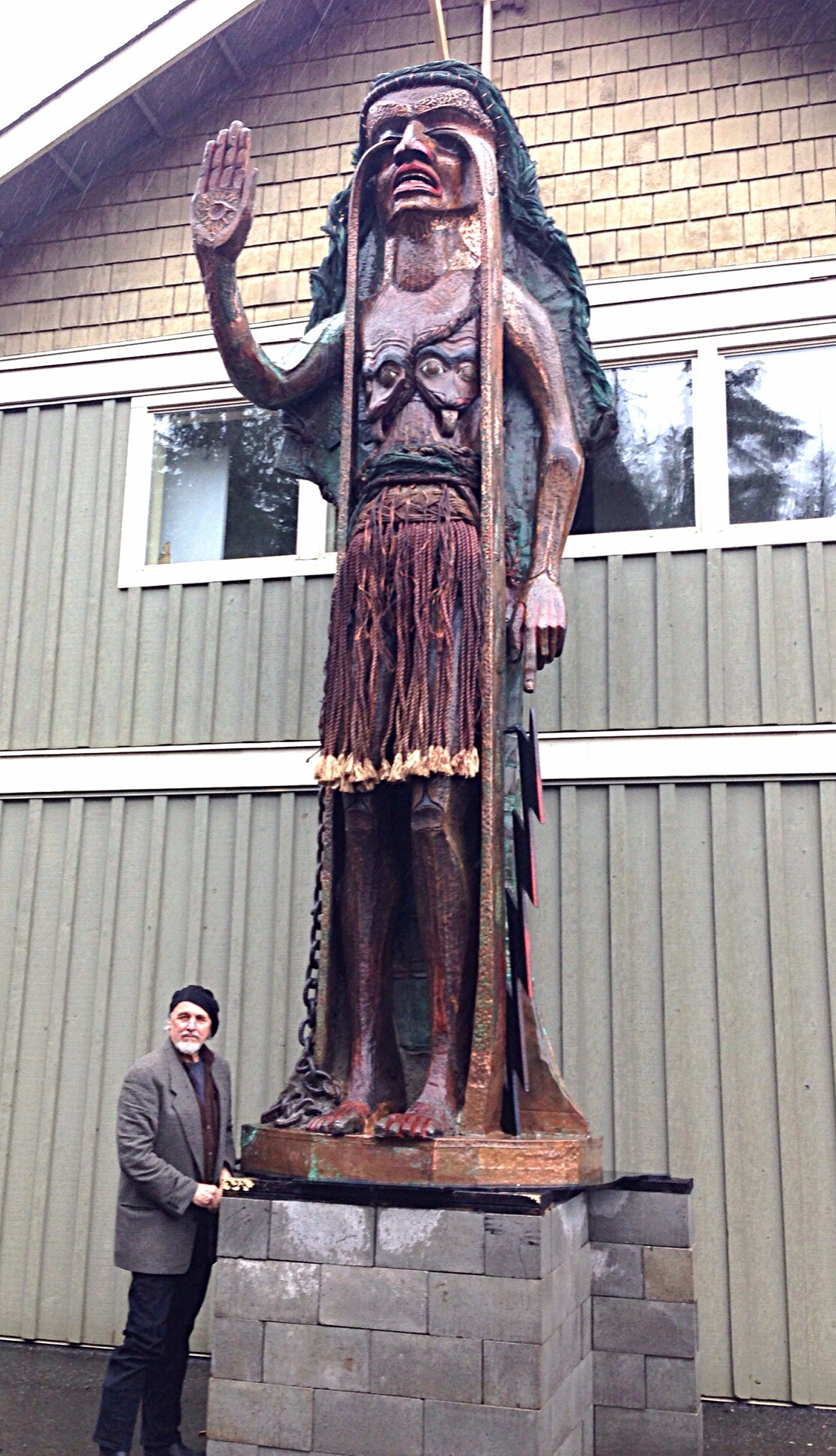The Nuu-chah-nulth newspaper Ha-Shilth-Sa ran an enthusiastic article on the return of Weeping Cedar Woman, and the associated celebration of Tribal Parks, on Easter Sunday. It’s a great read, with many first-hand memories from several who were there.
The April 22 article, by Shayne Morrow, gives some moving perspectives on that time in Clayoquot Sound. Some excerpts:
Tla-o-qui-aht First Nation celebrated the 30th anniversary of its declaration of a Tla-o-qui-aht Tribal Park on Meares Island with a gathering at Tofino Community Hall on April 20.
The 1984 declaration struck the first blow in a comprehensive fight to establish the right of First Nations people to protect their lands and resources, and by extension, those of their non-Native neighbours like Tofino. The April 21, 1984 declaration came about when monolithic logging giant MacMillan Bloedel (MB) announced plans to clearcut most of the forest cover on Meares Island, which is in the heart of Tla-o-qui-aht traditional territory.
Tla-o-qui-aht Beachkeeper Barney Williams Jr. remembered:
“… that the concept of welcoming visitors is an important Nuu-chah-nulth tradition, but that it is implicit that visitors return that respect.
“For generations, our family has welcomed people over our beaches, and that tradition continues,” he said.
That welcome was freely extended to Europeans who arrived in the late 18th century, he noted. That they did not return that respect is a matter of history.
“We must remember that we’ve been here – and we’re still here,” he said. “We continue to extend the hand of friendship to those who come on our land.”
Moses Martin, current Tla-o-qui-aht chief councillor and, in 1984 the elected chief and living in Opitsat when the MB intentions were revealed.
“We met at Wickanninish School. It was Easter Sunday,” Martin recalled, adding that the gravity of the situation was obvious to all.
“I’ve spent a great deal of my time building relationships, and when you run up against something like that, it’s easy to get support from both First Nations and non-Native people. We had been working with the Friends of Clayoquot Sound, reviewing study after study of Meares Island.” . . .
“Everybody was really on board, because the plan had 90 per cent of the island that was going to be logged,” he said. “We had seen that before, where whole mountains were clearcut. We didn’t want to see that here.”
FOCS board member Michael Mullin, who was instrumental in the return of Weeping Cedar Woman back, also spoke:
“It has been an honour to be part of this, and to be in a place where people are proud of their place and look to their future and, with the leadership of the Tla-o-qui-aht, this was the first place in North America that people actually stood up to defend their land,” Mullin said.
“Meares Island was the first place where people turned back a logging crew, and the first time that people said, ‘This is our land, and we are going to assert our right to protect it.’ For that reason, Meares Island Tribal Park has been a leader and a model, not just for this country, but for the whole world.”
Deborah Steel’s photos from the April 20 ceremony.
Follow-up stories April 25 from the Ha-Shilth-Sa:
- Two major artworks continue to inspire 30 years after Meares Island
- Chief Councillor remembers first days of long battle for Meares Island
And finally: the fundraising for Weeping Cedar Woman is ongoing (as of 28 April, 2014). To help, visit this page.
